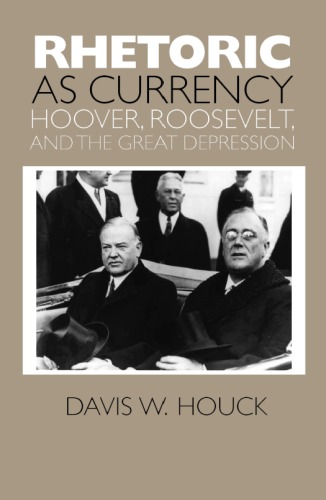Product desciption
Rhetoric As Currency Hoover Roosevelt And The Great Depression Davis W Houck by Davis W. Houck 9781585441099, 1585441090 instant download after payment.
Hoover, the president of economic depression; Roosevelt the president of recoverythe public images of these two men are so firmly fixed that they offer shorthand ways to talk about the era we know as the Great Depression. Yet their views on economic policy for taking the country out of its greatest economic calamity were not so different as is often supposed.
Indeed, the famed journalist Walter Lippmann once claimed that Roosevelt’s legislative measures represented a continuous evolution of the Hoover measures.” Moreover, both Hoover and Roosevelt shared a Keynesian conviction that public confidence was vital to recovery. They differed markedly, of course, in their ability to restore that confidence. Roosevelt’s advantage lay not just in his position in the changing of the guard. He employed a skilled staff of speech writers, and he had the negative example of Hoover before him from which to plot rhetorical strategies that would be more effective.
In Rhetoric as Currency, Houck uses the historical context of the Great Depression to explore the relationship of rhetoric to the economy and specifically economic recovery. He closely analyzes Hoover’s rhetorical corpus from March 4, 1929, through March 3, 1933, and Roosevelt’s from January 3, 1930, through June 16, 1933. This longitudinal study allows him to understand rhetoric as a process rather than a series of isolated, discrete products.
Houck first examines Hoover’s presidential rhetoric, tracing its paradoxes and the radical shift that occurred in the final year of his administration. The Depression, in his rhetoric, was a foe to be vanquished by an optimistic Christian and civic faith, not federal legislation. Once he determined that federal intervention was indeed required, he could not return to the dais; rather, he relied on an antagonistic press to carry his message of confidence. Abdicating the rhetorical pulpit, he left it in the hands of those opposed to him.
Houck then studies the economic rhetoric of Franklin Roosevelt as governor, candidate, president-elect, and finally president. He traces the key similarities and differences in Roosevelt's economic rhetoric with particular attention to an embodied economics, wherein recovery was premised less on mental optimism than a physical, active confidence.


